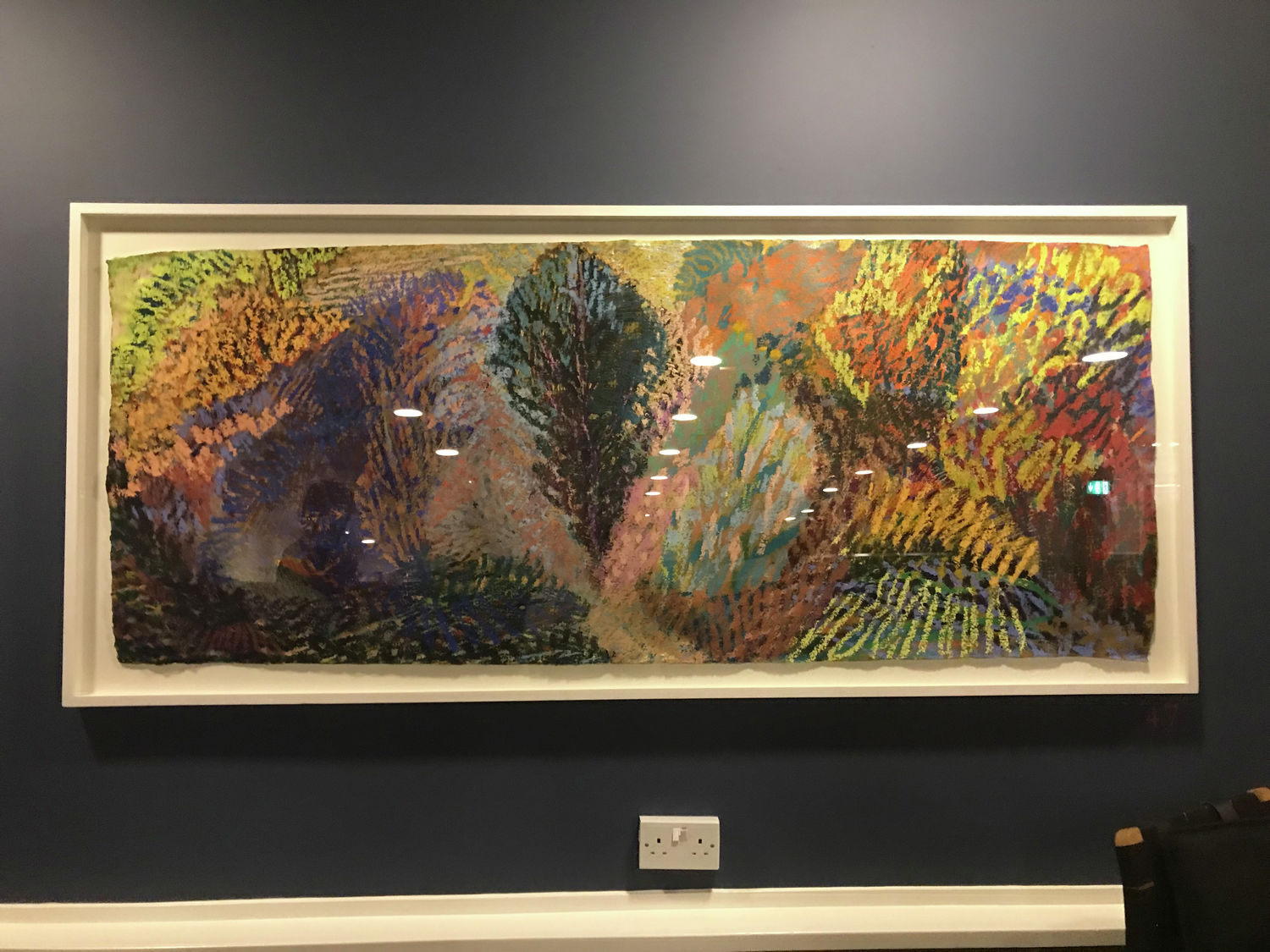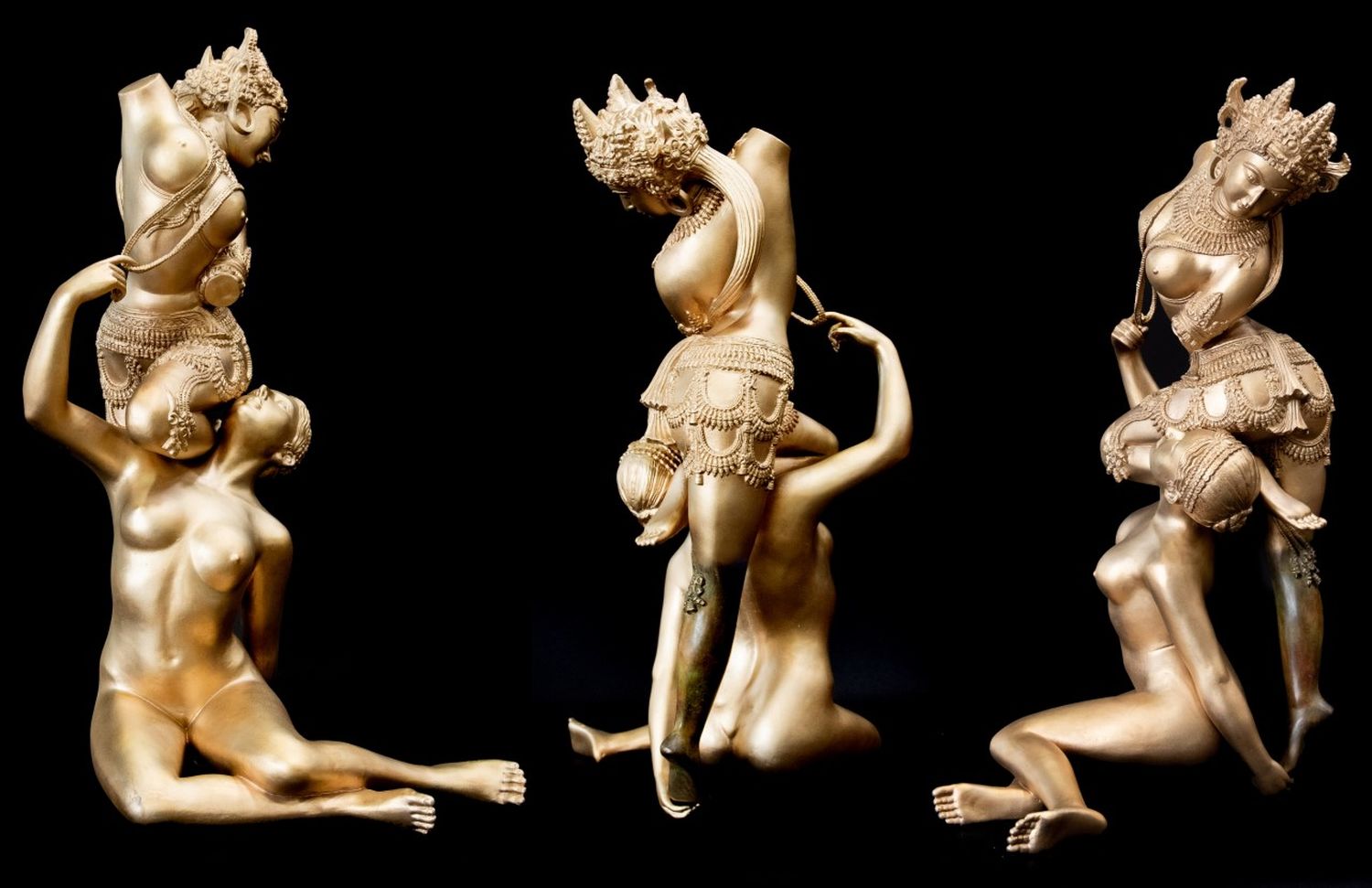To Ithaka is a striking collection of work by contemporary artist Mark Cazalet. A massive variety of shapes, textures and colours characterise the exhibition, making it a truly fascinating, cohesive portrait of his evolving style, ideas, and beliefs. Ranging from pastel work on thick, textured paper, to oil paint on huge rectangular collages, we see all sides of the artist. His background in illustration is palpable; while the titles don’t give too much away, the narratives of his work shine through the material. The retrospective feeling of the collection is also evident, as well as the reflective tone that echoes through both the physical art and its symbolism.
“these pieces do dance — they perform in a way, to both the eye and the mind”
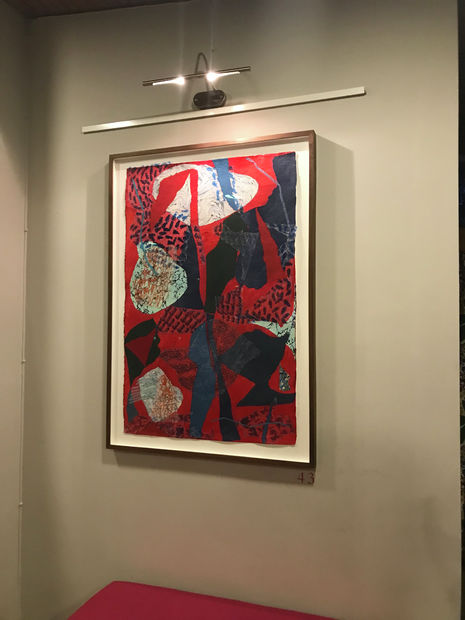
Amid our viewing of the pieces, a speech from both curator Professor Frances Spalding and Mark Cazalet himself illustrated further the intentions behind To Ithaka. The artist described how many of his newest pieces — created during lockdown — were conceived through the act of reflection. Approaching many of his pieces, I found them to be quite pattern-based and abstract. However, when speaking with us, Cazalet rejected the word “abstract”, adamant that when he begins a piece of work, the central idea is always intricate, distinct, and concrete — his art is centred in reality, and influenced by the people, places, and cultures he has encountered during his career. The importance of traveling, in both a spiritual and a literal sense, is evoked in his pieces, especially those more explicitly inspired by other cultures. His Zen Gardens collection derive their basis from a trip to Kyoto, whereas his 2020 series, The Dance is a collage featuring paper from Chinese manuscript. Amalgamated with bright, complimentary colours, these pieces do dance — they perform in a way, to both the eye and the mind. His work is culturally vivid, as well as inherently personal, capturing a certain peaceful sentiment that, as viewers, we desire to have for ourselves.
“the narrative themes have always been to a degree subservient to the materials and processes used”
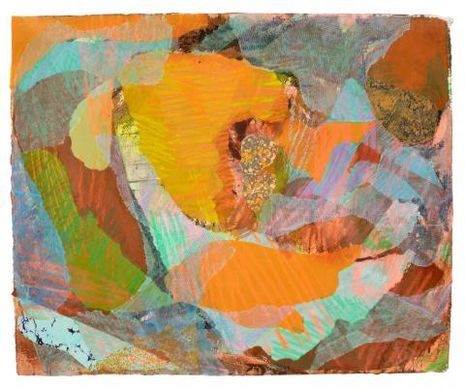
Leafing through the brochure of Cazalet’s work, it was obvious that this particular collection was a retrospective. Older pieces focus on urban landscapes; the Canalscape (1992) series is particularly interested in architectural and structural elements, and really stands out from his newer, brighter colour palette. Cazalet seems quite selective in the tones he selects, with many colours opposing each other, and the more demure palette evolving into the more colourful as time goes on. With all his pieces, there is a clear centrality of narrative, but it is something that seems de-prioritised in comparison to the bold patterns and colours, striking materials and contrasting textures which comprise his work. In his introduction to To Ithaka, Cazalet gestures that “it now appears that the narrative themes have always been to a degree subservient to the materials and processes used. Once I had thought that it was enough to make theatrical stagings holding a certain lyric emotion, but now it seems this is not the subject.”
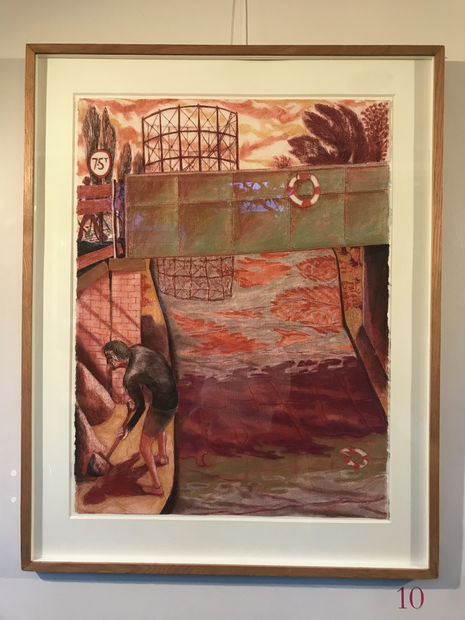
In his conversation with us, Cazalet explained that while his early pieces have more of a social realist focus, he has since realised that his work does not have to be centred on a specific moment. Instead, he favours the cyclical movement of time, with unity and rhythm becoming the most important aspects of his art. Perhaps this is why so many of his works appear to be grounded in the natural world: he reveals how he begins each piece with a natural encounter, before building up the patterns and textures to imitate those of the landscapes that have inspired him. “The journey has become my procedure,” he says, “the recording is through the medium of the work.”
Mark Cazalet is a contemporary artist based in London and Suffolk, UK. He trained at Chelsea School of Art and Falmouth School of Art. Immediately after graduating he was awarded the French government’s National Studentship award to study in France. Mark studied at L’école des Beaux-Arts, in the studio of Christian Boltanski. Simultaneously to this scholarship, he was awarded a year at the Cite-des-Arts studio complex in the Marais. After a year back in London he went to M.S. University Baroda for an eighteen-month Association of Commonwealth Universities Scholarship to study under Professor Fulham Mohamed Sheikh. Since his return to the UK, Mark has held a number of residencies, and in 2012 and 2013 was artist-in-residence twice at The Josef and Anni Albers Foundation, Connecticut, US. He is a Senior Member of Faculty at the Royal Drawing School; teaches at West Dean College and the Edward James Foundation, Sussex; and is a Trustee of City & Guilds of London Art School.
The Varsity Arts Team were kindly invited to a private previewing of the exhibition for the purpose of this review.

